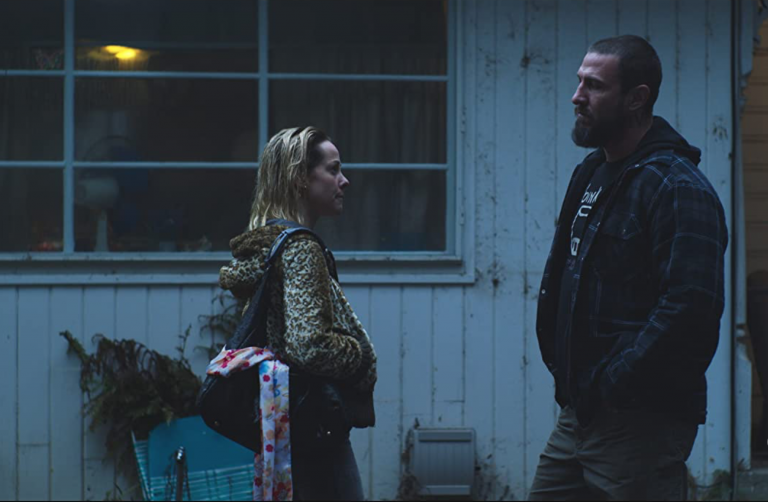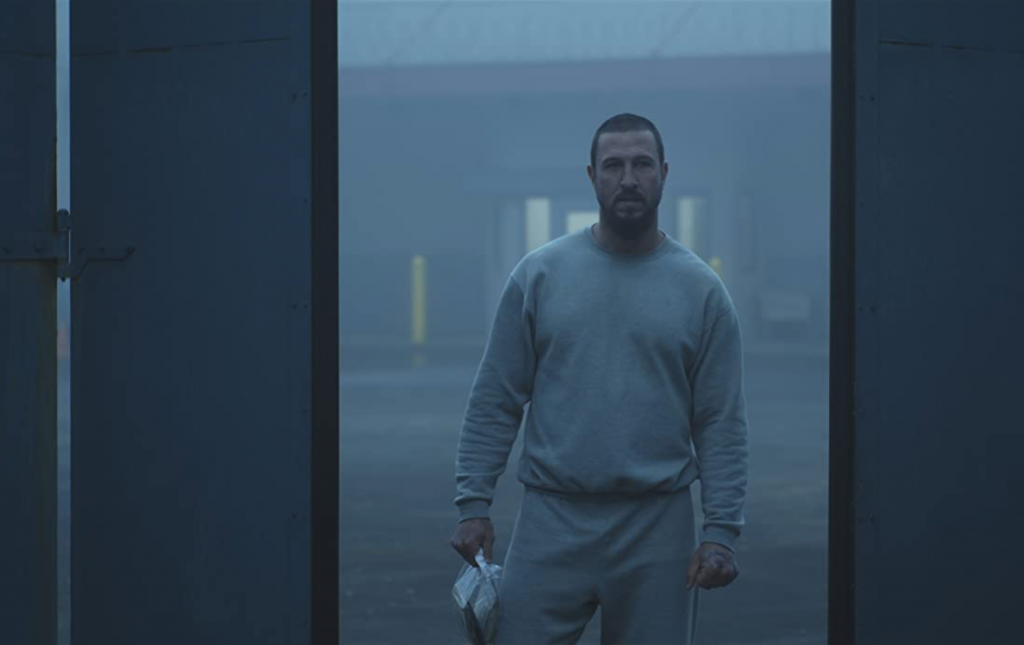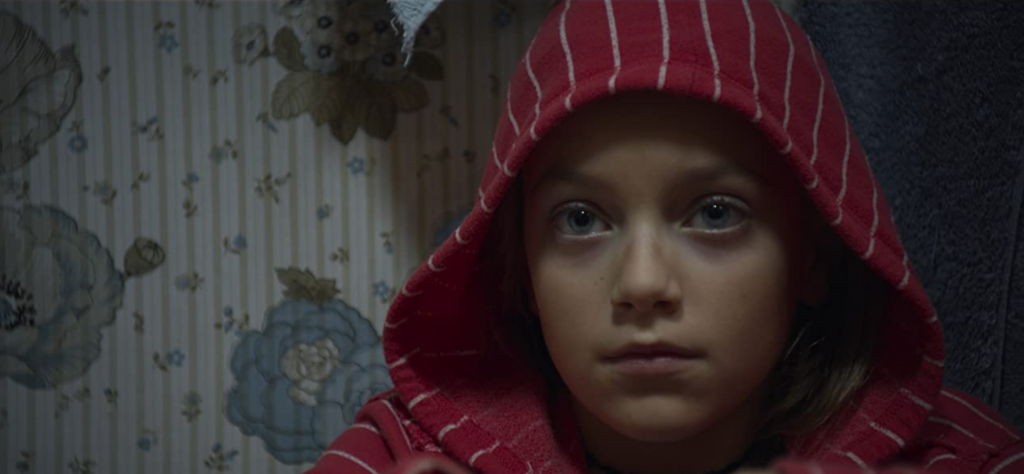
America’s working class must often contend with its difficult struggle to find its sense of place while living on the margins of society. That all-too-familiar physical and emotional battle is highlighted in the new relatable family drama, Lorelei. The powerful movie explores how unexpectedly starting and maintaining a family, especially in communities where economic growth is limited, drives both parents and their children to grapple with their unconventional identities, while also striving to improve their situations.
Sabrina Doyle made her feature film writing and directorial debuts on Lorelei. The drama stars executive producers Jena Malone and Pablo Schreiber, whose characters must figure out how to cope with the challenges of raising a family.
Lorelei follows Wayland (Schreiber) as he finishes his 15-year prison sentence for armed robbery. Upon his release, he returns to his blue-collar hometown and inadvertently reconnects with his high school girlfriend, Dolores (Malone). He soon discovers that she’s now a single mother struggling to support her three kids, who are all named after different shades of blue-Periwinkle Blue (Amelia Borgerding), Denim Blue (Parker Pascoe-Sheppard) and Dodger Blue and (Chancellor Perry), and have different fathers.
Soon after their reunion, Wayland moves in with the chaotic family and becomes a reluctant, yet much-needed, father figure. Struggling to pay the bills, Wayland finds himself drawn back to his old ways as Dolores yearns for her pre-motherhood dream of living in Los Angeles.
Doyle generously took the time last week to promote the distribution of the movie during an exclusive interview over Zoom. Vertical Entertainment released Lorelei over the weekend in select theaters and On Demand. The official distribution comes after the feature had its world premiere at the Deauville American Film Festival last September, and then had its North American Premiere at the Tribeca Film Festival last month.

An Exclusive Interview with Director Sabrina Doyle
Q: You made your feature film writing debut with the new drama, Lorelei. What was your inspiration in penning the screenplay, and what was the process like of scribing the story?
SD: I knew I wanted to tell a story about a blue-collar, working class family, as that’s the kind of family that I grew up in. My dad is a construction worker, and I’m a first-generation high school graduate, so I feel I really understand the dynamics of family.
It was also really important to me to tell this type of story because the films that I have seen that are set in blue-collar communities and feature working class families have good intentions. But they can also be suffocatingly literal and downbeat, and shine a light on the issues of being poor.
But I didn’t want to do that with this film, as I didn’t want to flatten out the characters into vessels for discussing issues. I instead wanted to give them complexities, depth and richness, and show the highs and lows of their lives.
I also wanted to show the characters’ dreams. I had a very active imagination growing up, which allowed me to see life differently than the one that might be expected from someone from my background.
So I really wanted to lean into this idea that these characters have resilience because of their ability to dream big, even when their lives and financial circumstances conspire to keep them small. So it was important for me to make a film that centers on the imagination. That’s how you get a film like this one, that’s really gritty on the one hand, but also has a magical, dreamlike element.
Q: Besides writing the script, you also made your feature film directorial debut with the project. How did penning the screenplay influence the way you approached helming the movie? How would you describe your directorial style on the set?
SD: I was so lucky. It was a tough film to make because we were low budget and didn’t have enough money to make it, frankly. We were always on the verge of not making, or finishing, it.
But I did have some massive strokes of luck as I was making the film. One of them was having the financing in place very early on from a gentleman who was a step-dad in real life, like how Wayland eventually becomes a step-dad in the film. So the gentleman had always wanted to make a film about the subject, as he raised four children who weren’t his biological children. He said it was the hardest, but also the most rewarding, thing he’s ever done.
So he was willing to put up the money for the film, and that was huge. There are so many indie scripts out there that never see the light of day, especially dramas, as the financing isn’t there. So I was very lucky to get the financing for this film early on.
Also having our producers, Kevin (Chinoy) and Francesca (Silvestri), on board our film, who also produced The Florida Project, which was so acclaimed, was huge. Their experience allowed us to be taken seriously by the industry when we went out to actors; when we went to Jena and Pablo’s agents and managers, they knew that Kevin and Francesca’s reputation of being able to take care of talent. So we were able to get this cast, which we may not have been able to do without them, as I’m a first-time director.
The final amazing thing that happened to us was that Pablo and Jena said yes to us. They both found something in the screenplay that really spoke to them personally. Pablo is a father of two boys, and has played all of these tough guys recently.
So he wanted a role in which he could be both tender and tough, and this character allowed him to do that.
With Jena, she had recently become a mother before we began filming, and this was her first major role back after becoming a mother. She’s been very raw and honest, and has spoken candidly about the difficulties of being a single mother in real life. She really wanted the opportunity to show that you don’t have to be a perfect mother for us to root for you as a character.
We expect so much of our female characters, in particular mothers, on screen. We like it when dads are flawed and have this redemption arc, but it’s harder to accept that from a woman. I think Jena really appreciated that in the screenplay, and that’s one of the reasons why she said yest to us.
Having all of that in place meant that even though we were a scrappy, difficult shoot, we succeeded in what we wanted to accomplish. We had amazing people who helped us, and in that sense, I was really lucky.

Q: Like you just mentioned, Lorelei stars Jena Malone and Pablo Schreiber, who both also served as executive producers on the feature. What was your experience collaborating with them as both actors and producers on the drama?
SD: They really fought for the vision of the movie. Pablo, as an executive producer, for example, was able to help save scenes. There was one that was in jeopardy of being cut because we didn’t have the money-the one in which the fish fell from the bird’s mouth as it was flying past the house. But as an executive producer, he was able to say, “This scene is really important to the story. This is the type of scene that inspired me to sign on to the movie.”
He also said, “There’s something about the surrealism of the story that I really appreciate, and I don’t feel as though it’s done enough in American cinema.” So he really fought for that scene, and it got reinstated. We were able to figure out a way to do it because he put his clout behind it.
The most important thing they also both did, besides being brilliant on screen, was help with the children. Jena was also a child actress herself, so she knew what the children were going through.
But they were both able to help the children’s performances because none of them had acted in a movie before. Pablo and Jena were so great with them as scene partners, and helped them get to where they needed to be in each scene.
Q: After Wayland’s released from jail and reunites with Dolores, he realizes he put her in a prison of her own by not being there for her as she’s had to raise her children alone. Why was it important to include that element in the film?
SD: They both had very personal connections to the story, and I think that’s what they built out from. Pablo often starts with the physicality of his characters, so he was able to understand Wayland through his physicality. Wayland, in theory, could be very intimidating to the children; Pablo’s 6’5 and goes around wearing this big, black coat the whole time.
But I think Pablo did a great job using his physicality in the film. He’s usually very cut and lean, but he put on weight for the role, so that Wayland can look bulky in a way that he was lifting weights in prison.
Pablo also went to a motorcycle club up in Oregon, where we shot, and hung out with some of the bikers there, so that he could see how they hold themselves, talk and act with each other. He just immersed himself in that world.
I also think Jena’s performance is astonishing, especially in the way that she’s able to convey so much emotion, especially when she’s underwater.
She was able to deliver this incredible performance without words that says so much, and did underwater training to be able to do that. So they both committed to various aspects of getting ready for their roles.
But in terms of their redemption arcs, both of them really loved the idea of playing characters who start the film in one way, and ended it in another way; it gave them somewhere to go. As actors, they had to look in the script for their characters’ turning points, so they knew where they were changing.
While they were doing their script analysis, they talked through the script with me. So they knew the script and their characters well by the end of the film, even more than I knew them. Even though I wrote their characters, I was thinking about all aspects of the film, and they were mostly just thinking about their characters, so their wisdom became great than mine.
Q: Speaking of shooting the film in Oregon, what was the process like of deciding where you would film the movie?
SD: We traveled between L.A., where I’m based, and Oregon for about a year-and-a-half. Every few months, we’d go for a few weeks, and drive all around the small towns in the part of Oregon where we were going to shoot. We knocked on doors and spoke to people about where we could film, through a mixture of location scouting and research.
We also spoke to people about the kind of life the characters in the film would have, including being un- or underemployed, and have gone to prison and being mixed up in drugs. That was really important because it not only gave us information, but also helped us get a lot of extras who appear in the film.
We found all of our locations while we were location scouting; we didn’t have a list of locations that someone gave us to look at during pre-production. We just drove around, and every time we saw something interesting, we’d stop and say, “We’re making a movie; would you be interested in allowing us to shoot here? Can we take a look around?”
All of the locations came to us that way; we’d screech on the breaks when we’d see something interesting, and then go in and take a look around. That’s how we found all of the locations for the film, including the house; I’d almost missed it because it was behind some shrubs.
The DP (Director of Photography, Stephan Paar) was driving and hit the breaks. I asked him what he was doing, and he said, “Look over there.” He was pointing to the house, which was all boarded up because no one had lived there for a year. It was exactly what we were looking for, as it had some of the shabbiness that we had wanted, and it was big enough that we could have room to film.
It was in the city of Banks, Oregon, and we got in touch with the city, which was able to track down the owners. We were then able to set up an agreement to film there.

Q: Lorelei had its world premiere at the Deauville American Film Festival, and had its North American Premiere at the Tribeca Film Festival. What was the experience like of bringing the drama to the festivals?
SD: It’s been such a joy going to festivals, and I’m so grateful to them. They’re the reason that we didn’t disappear as a film during COVID. They kept interest in the film alive and going.
We were supposed to premiere at the Tribeca Film Festival last year, but that got cancelled just weeks before the festival was supposed to start, due to COVID. It was a dream of ours to premiere at a festival like Tribeca, so that was a bit of a disappointment.
We were able to eventually premiere the film at the Deauville American Film Festival in France, which is such an incredible festival. They received the film so warmly. Vanessa Paradis (who’s the festival’s jury president) and her jury gave us the Jury Prize, which is an incredible honor.
I was able to go to that, and it was an incredible experience. Up until that point, we made the film in a bubble, and hadn’t watched it with an audience yet, so we didn’t know how they would respond to it. So to finally get it to people and have them say it’s meaningful meant so much to me…I made the film for people with complex family dynamics, so it was wonderful to have people with those types of families tell us what it meant to them.
We were then able to come full circle and screen at Tribeca last month, which was amazing. They invited all of the 2020 films back to screen this year, and we had a beautiful outdoor screening by the banks of the Hudson, which was lovely. That’s how we ended our festival run.
Q: Lorelei (is being) released (today) by Vertical Entertainment. What was the process of securing the distribution deal with the streaming service?
SD: The film comes out (today), and it’s a day-and-date release, which means that it will play in select theaters across the U.S. It’s also being released on VOD, for people who can’t see it in a theater. But I would strongly encourage people to see it in a theater if it’s playing in a theater near them, and they feel safe to do so. I love watching this film on the big screen, as I shot it to be on the big screen.
But what I really love about the day-and-date model is that people can also watch it on VOD, if they can’t go to a theater. This is a small theatrical release, so with the day-and-date model, people can still see it the same day on VOD at home.
Whatever way works best for people to see films, especially independent films, during these times is great. There are several options for this film, including the big screen, if that works for people. If it doesn’t, they can also see it at home. I feel this is the best way to get the widest possible audience for our film; everyone can see it, no matter where they are in the U.S.
Here’s the trailer of the film.

